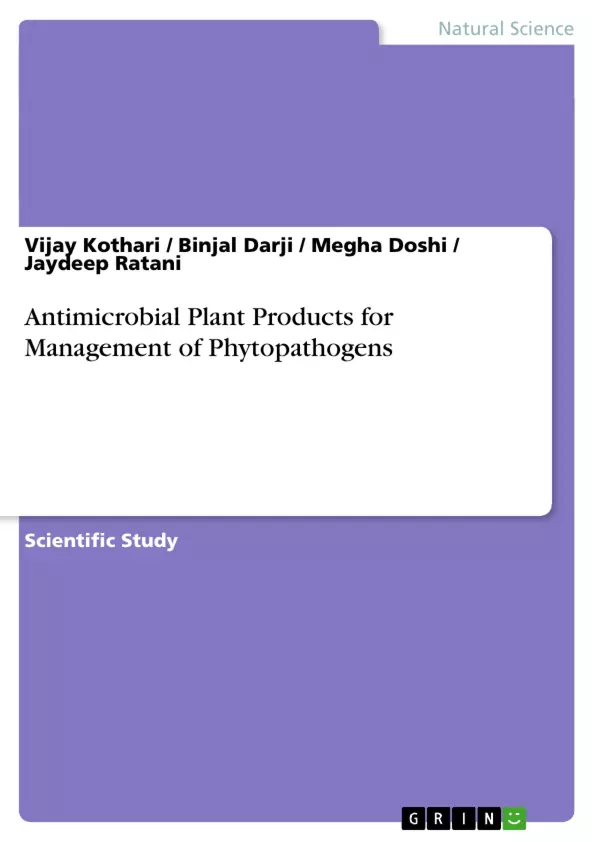Extracts of five different plant seeds- Syzygium cumini, Pheonix sylvestris, Manilkara zapota, Tamarindus indica, and Annona squamosa- prepared by Microwave Assisted Extraction (MAE) method were screened for their antimicrobial activity against certain phytopathogenic microorganisms. Ethanolic extract of S. cumini was found to possess highest average total activity against susceptible microbes. Total activity was found to have a positive correlation with the extraction efficiency. Methanolic extract of T. indica exerted bactericidal action against Agrobacterium tumefaciens and Pseudomonas syringae. Ethanolic extract of P. sylvestris was able to protect cabbage leaf against Xanthomonas campestris. Acetone extract of M. zapota was able to reduce aflatoxin production in Aspergillus parasiticus by >50 %. Curcumin proved bactericidal against X. campestris.
Inhaltsverzeichnis (Table of Contents)
- Preamble
- Literature Survey
- Experiments
- Organisms
- Media
- Extraction Methods
- Antimicrobial Activity
- Results and Discussion
- Final Comments
Zielsetzung und Themenschwerpunkte (Objectives and Key Themes)
This research aims to investigate the potential of antimicrobial plant products for the management of phytopathogens. The study focuses on extracting and evaluating the antimicrobial activity of various plant seeds against a range of bacterial and fungal pathogens.
- Antimicrobial activity of plant extracts
- Evaluation of extraction methods
- Impact of plant products on phytopathogens
- Potential applications in plant disease management
Zusammenfassung der Kapitel (Chapter Summaries)
Preamble: This chapter provides an introduction to the research topic, highlighting the significance of antimicrobial plant products in plant disease management. It discusses the growing concern over the use of synthetic pesticides and the need for sustainable alternatives.
Literature Survey: This chapter reviews existing literature on the antimicrobial properties of plants and their applications in agriculture. It explores various plant species, their bioactive compounds, and their efficacy against different phytopathogens.
Experiments: This chapter details the experimental methodology employed in the study. It outlines the selection of plant species, microbial organisms, extraction methods, and the techniques used to assess antimicrobial activity.
Results and Discussion: This chapter presents the findings of the research, including the extraction yields, antimicrobial activity of different plant extracts, and the impact of various factors on the efficacy of the extracts. It analyzes the results and discusses their implications for plant disease management.
Schlüsselwörter (Keywords)
Antimicrobial plant products, phytopathogens, plant disease management, extraction methods, antimicrobial activity, bioactive compounds, sustainable agriculture.
- Quote paper
- Vijay Kothari (Author), Binjal Darji (Author), Megha Doshi (Author), Jaydeep Ratani (Author), 2012, Antimicrobial Plant Products for Management of Phytopathogens, Munich, GRIN Verlag, https://www.grin.com/document/204568



